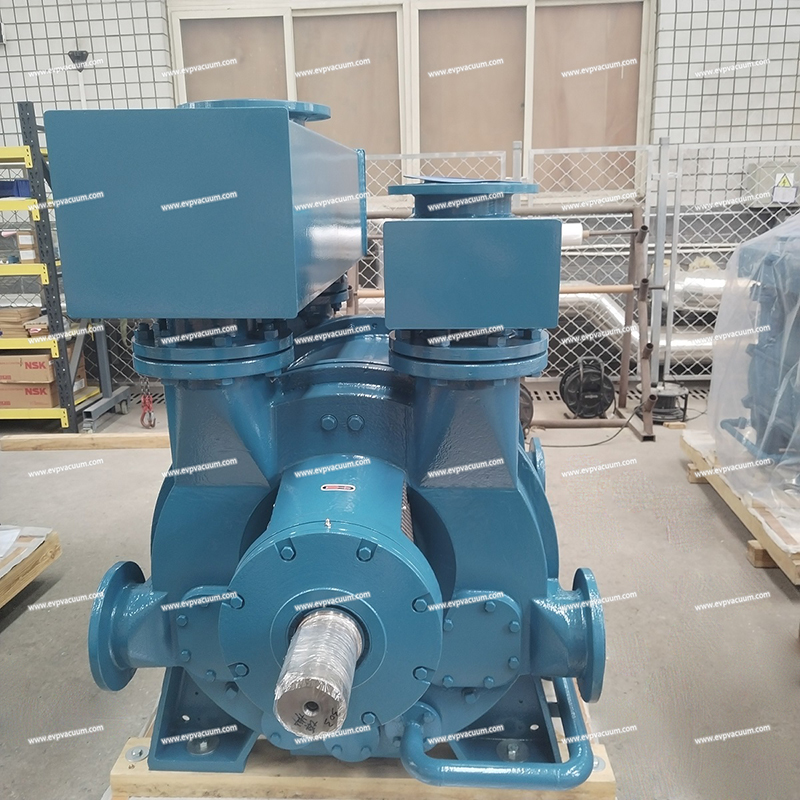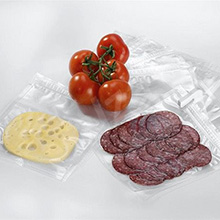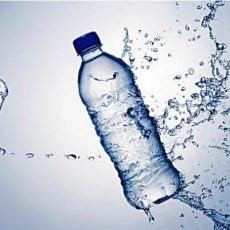Water ring pumps are used in beer canning
Water ring vacuum pumps play a vital role in beer canning production lines. They are mainly used to establish and maintain the necessary vacuum environment during the filling process.
1.The application of water ring vacuum pump mainly revolves around the following core links:
① Vacuuming empty cans:
Purpose: Before filling beer, it is necessary to vacuum the inverted or tilted empty cans (cans or glass bottles) after cleaning.
Function: Remove residual oxygen: Extract the air (mainly oxygen) in the can and significantly reduce the oxygen content in the top space of the can. This is essential for protecting the flavor of beer, preventing oxidation and deterioration (producing cardboard taste, etc.) and extending the shelf life.
Create a low-pressure environment: Provide a low-pressure space for subsequent CO₂ flushing (pre-charging) or direct filling.
Process: The empty can is sent to the vacuum station, the vacuum suction cup or sealing cover forms a seal with the can mouth, and the water ring pump quickly sucks the gas in the can to reach the set vacuum degree.
② Vacuum sealing of filling valve:
Purpose: To maintain the seal between the filling valve and the can mouth during the beer filling process.
Function: When the filling head descends and contacts the can mouth, the can mouth is tightly adsorbed on the sealing ring of the filling valve through vacuum suction. This ensures a complete seal during the filling process, preventing beer leakage, foam overflow, and external air (oxygen) from invading the filling area.
Process: The water ring pump provides a continuous and stable low vacuum (usually lower than the vacuum of the empty can) for the sealing chamber of the filling valve.
③ Vacuum establishment after CO₂ flushing (pre-charging):
Purpose: After vacuuming, a small amount of food-grade CO₂ gas is sometimes injected into the can for flushing to further displace the residual air. After that, vacuuming may be performed again.
Function: The CO₂ used for flushing is pumped out again together with the trace amount of air that may remain, ensuring that the environment in the can is almost pure, creating the best conditions for filling beer and minimizing dissolved oxygen.
Process: After the CO₂ flushing station, the can is vacuumed again using a water ring pump.
④ Vacuum detection after filling (optional but common):
Purpose: Before or after capping, check whether the desired vacuum level is achieved in the can.
Function: Ensure that the filling and capping process is well sealed and leak-free. Insufficient vacuum may mean that the seal is not tight or there is a problem with the filling process (such as too much oxygen entering), and the can product needs to be rejected.
Process: Use the vacuum probe to touch the tank top (or the tank after capping), and the water ring pump (or the detection device connected to the same vacuum system) measures the pressure inside the tank and compares it with the set value.
2.Why are water ring pumps particularly suitable for beer canning applications?
① Handling humid gases:
The humidity of the beer filling environment is very high, and there may also be a small amount of cleaning liquid residue or beer foam in the can. The water ring pump uses water as the working fluid, has good tolerance to water vapor and tiny droplets in the pumped gas, is not easy to damage, and has stable performance.
② Isothermal compression:
The compression process is close to an isothermal process (small temperature change), which is beneficial for handling gases that may contain volatile organic matter (trace alcohol, aromatic substances), reducing the risk of material denaturation or explosion due to high temperature (although the risk is very low).
Relatively simple structure, sturdy and durable: Compared with oil-lubricated rotary vane pumps, water ring pumps have a simple structure, fewer moving parts, relatively easy maintenance, and can withstand the continuous production environment of breweries.
③ Generate medium vacuum:
The vacuum required for beer canning is usually in the range of 300 mbar to 600 mbar abs (absolute pressure) (that is, relative vacuum -700 mbar to -400 mbar). Water ring pumps are efficient and stable in this vacuum range.
Cleanliness: Using water as the working medium avoids the risk of lubricating oil contaminating the product (as long as the design is appropriate, the working water is isolated from the product gas). The working water is usually recycled softened water or treated water.
Relatively low operating noise and vibration.
3.Key considerations in the application:
① Working fluid (water) management:
Water quality: Softened or deionized water must be used to prevent scale from clogging the pump body and pipelines. Water quality needs to be monitored and replaced/replenished regularly.
Temperature control: The working fluid will heat up during circulation, affecting the pump’s suction capacity and ultimate vacuum. A heat exchanger (cooler) is usually required to maintain the working fluid temperature within a reasonable range (e.g. 15-25°C).
Sealing water supply: A stable sealing water supply is required to maintain the water ring.
② Gas-water separator:
The gas discharged from the pump carries a large amount of water mist, which must pass through an efficient gas-water separator to separate the water and return it to the working fluid system or discharge it, and the dry gas is emptied.
③ Buffer tank:
A buffer tank is usually installed before the pump inlet to stabilize the vacuum, buffer the air flow pulsation, and prevent liquid (accidentally inhaled beer or cleaning fluid) from directly entering the pump body to cause damage or water ring damage.
④ Vacuum pipeline design:
The pipeline should be as short, straight and of sufficient diameter as possible to reduce pressure drop. Appropriate filtering devices need to be set up (to prevent solid particles from entering the pump) and a drain valve should be set at the lowest point.
⑤ Sanitary design:
Parts in contact with product gas (such as the inner wall of the buffer tank and connecting pipes) should be made of food-grade stainless steel for easy cleaning and discharge.
⑥ Maintenance:
Regularly check the working fluid condition, impeller wear, seals, clean the cooler, check the effect of the gas-water separator, etc.
4.Summary:
The water ring vacuum pump is the core equipment of the vacuum system of the beer canning production line. It provides a reliable and stable vacuum environment in key links such as empty can oxygen extraction, filling valve sealing, CO₂ flushing post-processing and vacuum detection, effectively reducing the dissolved oxygen content in the beer filling process and ensuring the sealing, thus playing a decisive role in protecting the freshness, flavor stability and shelf life of the final product. Its characteristics of tolerance to humid gas, isothermal compression, cleanliness and safety make it the preferred vacuum solution for the beer industry.
(The article comes from the Internet. If reprinting is not allowed, please contact our company to delete it.)





